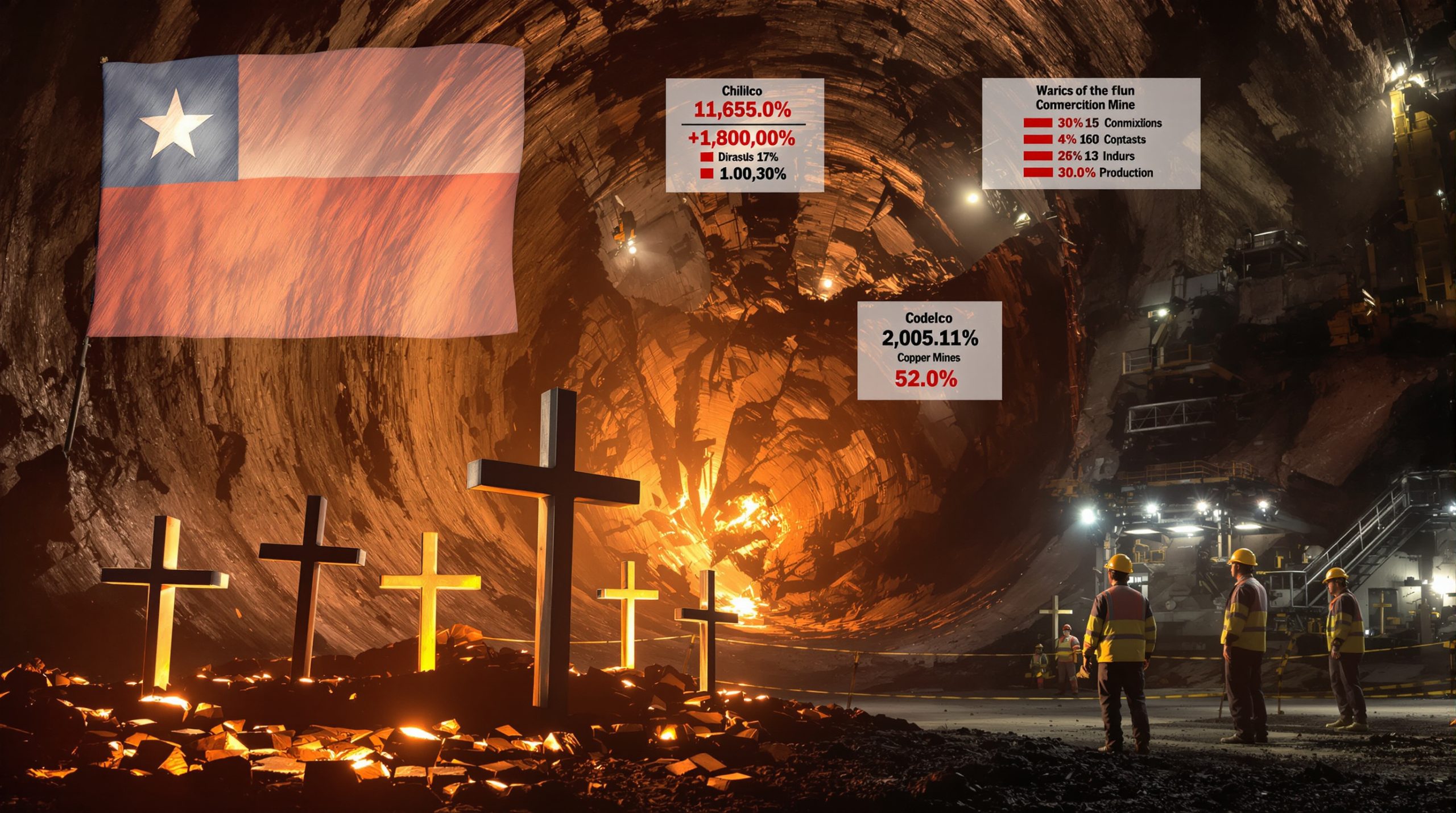Understanding Mali's Gold Industry Crisis
Mali's position as one of Africa's leading gold producers makes its current production crisis particularly concerning for the national economy. Industrial gold mining serves as a vital economic pillar, contributing approximately 25% to Mali's GDP and representing over 70% of the country's export earnings according to World Bank data. The mining sector supports roughly 400,000 jobs directly and indirectly, making disruptions in this sector economically devastating on multiple levels.
The dramatic 32% year-over-year decline in gold production, which fell to just 26.2 tons by August 2025, can be directly attributed to the suspension of operations at the Loulo-Gounkoto complex. This mining operation typically accounts for 25-30% of Mali's total industrial gold output, producing between 500,000-600,000 ounces (15-18 metric tons) annually. The scale of this single operation demonstrates why its closure has had such significant ripple effects throughout Mali's economy.
How significant is Mali's gold sector to its economy?
The gold mining industry represents the backbone of Mali's export economy, with the sector generating critical foreign exchange earnings that sustain government spending and economic development. Before the current production crisis, gold accounted for approximately 80% of Mali's export revenue, making it indispensable for the nation's economic stability.
Gold mining also creates substantial tax revenues for Mali's government through royalties and corporate taxes. These funds typically finance infrastructure development, public services, and other essential government functions. The current production shortfall has created notable gaps in government revenue streams, forcing difficult fiscal adjustments.
Beyond direct economic contributions, Mali's gold industry supports a complex ecosystem of ancillary businesses, from equipment suppliers to service providers, that depend on mine operations. Many of these businesses are locally owned and represent an important source of entrepreneurial activity in mining regions.
What caused the dramatic production decline in 2025?
The suspension of operations at the Loulo-Gounkoto complex, which Barrick Gold acquired through its merger with Randgold Resources in 2019, stands as the primary cause of Mali's gold production dispute. The complex consists of multiple open-pit and underground operations across two main sites, with extensive processing facilities capable of handling significant ore volumes.
The dispute leading to the suspension began escalating in late 2024 when Malian authorities blocked gold exports from the mine. This was followed by the detention of several Barrick staff on tax-related charges, creating an operational environment that eventually made continued mining activities impossible. By January 2025, Barrick announced a complete suspension of operations, citing force majeure conditions.
In June 2025, a Malian court placed the mine under the management of a state administrator, further complicating the situation. While limited operations have continued since July under government supervision, production levels remain far below the mine's typical capacity, with output at only a fraction of historical levels.
The Mining Code Controversy
Mali's mining sector has been fundamentally reshaped by regulatory changes implemented under the country's military government. The 2023 mining code represents a significant shift in resource governance that has altered the relationship between the state and mining companies operating within its borders.
What changes did Mali's 2023 mining code introduce?
The revised mining code, adopted in August 2023, implemented several significant changes to Mali's resource governance framework. Among the most impactful modifications were increased equity requirements, with the government now mandating a minimum 20% stake in all mining projects, up from more flexible arrangements under previous regulations.
Royalty rates on gold exports increased substantially from 6.5% to 10%, directly affecting the profitability of existing operations. The code also introduced stricter requirements for local labor and supplier participation, creating additional operational adjustments for mining companies.
Another significant change involved new profit-based taxation mechanisms that would activate during periods of high commodity prices, allowing the government to capture additional revenue when gold prices exceed certain thresholds. This represented a departure from the more stable tax regime that had previously governed the sector.
| Previous Regulations | 2023 Mining Code Changes |
|---|---|
| Lower equity stakes | Minimum 20% government equity stake in all projects |
| 6.5% royalty rate | Increased royalties to 10% on gold exports |
| Flexible local content | Stricter requirements for local labor and suppliers |
| Standard taxation | New profit-based taxes during high commodity prices |
These changes reflect a comprehensive restructuring of Mali's approach to mineral resource governance, with significant implications for existing operators and potential investors alike.
Why did the government implement these changes?
The military-led government, which took power through coups in 2020 and 2021, has embraced "resource sovereignty" as a central component of its economic policy agenda. This nationalist approach aims to ensure Malians receive what the government considers a fair share of the country's mineral wealth.
Government officials have repeatedly cited perceived imbalances in previous mining agreements as motivation for the reforms. They argue that prior arrangements favored foreign companies at the expense of national interests, pointing to relatively low government participation and royalty rates compared to some other resource-rich African nations.
The timing of these changes also coincides with broader regional trends toward resource nationalism across West Africa. Countries including Ghana and Burkina Faso have implemented similar equity participation requirements and increased royalty rates in recent years, suggesting a regional shift in approaches to resource governance.
Mali's government has framed the mining code reforms as essential for long-term economic development, arguing that increased state participation will allow the country to build sovereign wealth from its natural resources rather than seeing profits primarily flow to foreign shareholders.
The Barrick Gold Dispute Timeline
The conflict between Mali's government and Barrick Gold over the Loulo-Gounkoto complex has evolved through several distinct phases, from initial regulatory disagreements to legal battles in international forums. This progression illustrates the escalating nature of resource nationalism disputes in the mining industry trends.
How did the conflict with Barrick Gold escalate?
The dispute followed a clear pattern of escalation since the adoption of Mali's revised mining code:
- August 2023: Mali adopts its revised mining code with increased state participation requirements
- Late 2024: Government blocks gold exports from Loulo-Gounkoto, creating operational challenges
- December 2024: Authorities detain several Barrick staff members on tax-related charges
- January 2025: Barrick suspends operations at Loulo-Gounkoto, citing force majeure conditions
- January 2025: Barrick initiates international arbitration proceedings through ICSID
- February 2025: A tentative agreement is reached but not ratified by the Malian government
- May 2025: The World Bank's international arbitration tribunal confirms the case can proceed
- June 2025: A Malian court places the mine under a state-appointed administrator
- July 2025: The court-appointed overseer announces plans to sell stockpiled gold to cover costs
This timeline demonstrates how quickly resource disputes can escalate from regulatory disagreements to complete operational shutdowns. The involvement of both national courts and international arbitration bodies also highlights the complex jurisdictional issues that often characterize mining disputes.
What is Barrick's legal position in the dispute?
Barrick maintains that its 2016 mining convention includes stability clauses valid until 2032, which should protect the company from retroactive application of Mali's new mining code. These stability provisions were specifically designed to guarantee fiscal and regulatory terms for the duration of the agreement, providing investors with certainty regarding operating conditions.
The company argues that Mali's actions constitute violations of both the mining convention and international investment treaties to which Mali is a signatory. Such treaties typically include provisions protecting foreign investments from expropriation or discriminatory treatment and guarantee fair and equitable treatment.
This legal position forms the basis of Barrick's arbitration case at the International Centre for Settlement of Investment Disputes (ICSID), a World Bank institution that specializes in resolving investment disputes between states and foreign investors. Mining companies historically prevail in approximately 60% of ICSID arbitrations, according to published statistics, though each case depends on specific circumstances and treaty provisions.
Barrick's argument centers on the principle of pacta sunt servanda (agreements must be kept), asserting that Mali cannot unilaterally alter the terms of a binding agreement. The company maintains that stability clauses exist precisely to protect investments against the type of regulatory changes implemented through Mali's new mining code.
Economic and Social Impacts
The production disruption at Loulo-Gounkoto has created far-reaching economic and social consequences that extend well beyond the mining sector itself. These impacts illustrate the centrality of gold market resurgence to Mali's economic structure and the vulnerability created by dependence on mineral exports.
How has the production drop affected Mali's economy?
The 32% decline in gold output has created several significant economic challenges for Mali:
- Reduced export earnings: The country has experienced a substantial decrease in foreign exchange revenue, limiting its ability to finance imports and service international debts
- Tax revenue shortfall: Lower government income from royalties and taxes has constrained public spending and affected budget execution
- Supply chain disruption: Local businesses dependent on mining operations face reduced demand for goods and services, creating secondary economic effects
- Employment impacts: Thousands of direct and indirect jobs have been affected by the mine suspension, increasing unemployment in already vulnerable regions
These economic impacts are particularly challenging given Mali's limited economic diversification and high dependence on the mining sector. The country lacks ready alternatives to replace the lost revenue and economic activity from reduced gold production.
The situation has also affected Mali's economic credibility with international partners and investors. The production decline, combined with the ongoing dispute with a major international mining company, has raised questions about the country's investment climate and regulatory predictability.
What are the local community impacts of the mine closure?
Communities surrounding the Loulo-Gounkoto complex have experienced particularly severe effects from the mine suspension:
- Thousands of mine employees have faced job insecurity or outright unemployment since operations were suspended
- Local supplier contracts worth millions of dollars annually have been reduced or terminated
- Community development projects previously funded by the mine have faced delays or cancellation
- Regional economic activity dependent on mine employee spending has declined significantly
According to assessments from development economists, mining communities in Mali typically rely on mines for 60-80% of local economic activity. This high dependence creates acute vulnerability when operations are disrupted.
The social impacts extend beyond immediate economic effects to include potential challenges in healthcare access, educational opportunities, and social cohesion in affected communities. Many social services in mining regions receive direct or indirect support from mining operations, making mine closures particularly damaging to community welfare.
Government Resource Strategy
Mali's military government has pursued a consistent resource nationalism strategy despite the production challenges created by the dispute with Barrick Gold. This approach reflects both ideological commitments and practical considerations regarding resource governance.
How is Mali's government responding to the production crisis?
Despite the significant production shortfall, Mali's government has maintained its position on resource sovereignty and continues implementing its broader mineral resource strategy. This persistence indicates that the government views the current disruptions as an acceptable cost for establishing greater state control over the mining sector.
The Ministry of Mines has reported expenditures exceeding 560 billion XOF (approximately US$930 million) for mineral resource development in the first half of 2025. This substantial investment suggests the government is committed to maintaining sector activity despite ongoing disputes with international mining companies.
The government has also expanded its focus beyond gold to other minerals, particularly lithium, which is increasingly important for global battery production. This diversification effort aims to reduce dependence on gold while capturing value from emerging mineral markets.
As of August 2025, the government has been applying a 35% local ownership rule across the mining sector, combining 20% state participation with 15% ownership by private Malian investors. This implementation represents a significant step toward the government's goal of increased national participation in the mining sector.
What is the government doing with seized gold assets?
The government has taken several actions regarding gold assets at the Loulo-Gounkoto complex:
- Authorities have moved seized gold worth an estimated US$117 million, affecting stockpile levels without altering production figures
- In July 2025, the court-appointed administrator announced plans to sell one metric ton of stored gold to cover short-term operational costs at the complex
- These actions indicate the government's intention to maintain some level of activity at the site despite the ongoing dispute with Barrick
The government's handling of seized gold assets suggests a strategy of leveraging existing resources to maintain limited operations while pursuing longer-term control of the mining complex. However, this approach faces challenges in sustaining technical capabilities and accessing international markets without the participation of the original operator.
Mali's actions regarding seized assets also carry potential implications for the ongoing arbitration proceedings, as they may be viewed as additional evidence of government actions affecting Barrick's investment rights. International arbitration tribunals typically consider the cumulative effect of state measures when assessing claims of treaty violations.
International Arbitration Process
The legal dispute between Barrick Gold and Mali has entered the complex world of international investment arbitration, creating a parallel track to the operational conflict over the Loulo-Gounkoto complex. This legal process will likely play a decisive role in determining the ultimate resolution of the dispute.
What is the status of the arbitration proceedings?
The international arbitration case initiated by Barrick in January 2025 has progressed through several preliminary stages:
- In May 2025, the World Bank's tribunal confirmed the case could proceed to full consideration
- Hearings on provisional measures were conducted in July 2025, addressing urgent requests to prevent irreparable harm
- No ruling has been issued as of September 2025 on either provisional measures or substantive claims
These developments represent early steps in what typically becomes a lengthy arbitration process. ICSID cases average 2-4 years from registration to final award according to the institution's annual reports, suggesting that a final resolution may not come until 2027 or beyond unless a negotiated settlement is reached.
The arbitration process includes several distinct phases, including jurisdictional challenges, merits hearings, and potential annulment proceedings. Each phase involves extensive written submissions and oral arguments, contributing to the extended timeline for resolution.
International arbitration practitioners note that provisional measures requests like those heard in July are common in mining disputes, especially when assets are at risk of being sold or altered during proceedings. Such measures aim to preserve the status quo while the arbitration progresses.
What potential outcomes could emerge from arbitration?
The arbitration could result in several possible outcomes, each with different implications for Mali's gold market surge:
- A ruling in favor of Barrick could require Mali to honor the stability clauses in the 2016 mining convention, potentially invalidating the application of the new mining code to Loulo-Gounkoto
- A decision supporting Mali's sovereign right to modify mining regulations would strengthen the government's position in negotiations with other mining companies
- A compromise ruling might balance investor protections with state sovereignty, potentially establishing parameters for the application of new regulations to existing agreements
- The tribunal could award financial compensation to Barrick without restoration of previous operating terms, effectively monetizing the company's claims
- The parties might reach a negotiated settlement prior to a final ruling, potentially involving modified terms that accommodate both sides' core interests
Similar cases in the region, such as Kinross Gold's dispute with Mauritania over the Tasiast mine, have often resulted in negotiated settlements that modify original agreements while allowing operations to continue. Such outcomes typically involve concessions from both parties rather than complete victory for either side.
Mining Sector Outlook
The future of Mali's mining sector depends on how the current dispute is resolved and how other mining companies respond to the country's regulatory changes. These factors will shape both short-term production recovery and long-term gold investment insights in Mali's mineral resources.
How are other mining companies responding to Mali's regulatory changes?
Several mining companies have taken different approaches to Mali's new mining code, illustrating the range of potential responses to resource nationalism:
- In July 2025, reports indicated that Endeavour Mining and two other gold producers had reached agreements with the government to comply with the new mining code, suggesting some companies are finding pathways to accommodation
- Some operators have negotiated amendments to existing agreements that phase in new requirements over time, creating a more gradual transition
- Others have accepted the new terms to maintain operational stability, prioritizing continued production over challenging regulatory changes
- New investors are carefully evaluating the changed risk profile of Mali's mining sector, potentially demanding higher returns to compensate for increased regulatory risk
- Some companies have begun diversifying investments to reduce exposure to Mali, allocating exploration and development capital to jurisdictions perceived as having more stable regulatory environments
B2Gold's Fekola mine, another major gold operation in Mali, continues normal operations under existing agreements according to the company's Q2 2025 results. This suggests that not all international mining companies have experienced the same level of conflict with Malian authorities, potentially reflecting differences in agreement terms or company approaches.
What is the future outlook for Mali's gold production?
The production outlook for Mali's gold sector depends on several critical factors:
- Resolution of the Barrick dispute through arbitration or negotiation will determine whether the Loulo-Gounkoto complex returns to full production
- Performance of other active mines in the country remains crucial for maintaining overall output levels
- Success of the state administrator in maintaining operations at Loulo-Gounkoto will influence near-term production figures
- Government policy decisions regarding resource nationalism may evolve based on economic realities and international pressure
- International investor confidence in Mali's mining sector will affect future exploration and development investments
If the Loulo-Gounkoto complex resumed full operations, ministry projections suggest it could still add 17.5 tons to annual output. However, progress under state administration has been limited, with operations continuing at only a fraction of original capacity.
The experiences of other African countries that have implemented resource nationalism policies suggest that production typically faces a transition period of reduced output before stabilizing under new arrangements. Ghana's mining sector, for example, experienced temporary production declines following mining code changes in 2019 before recovering as companies adapted to new requirements.
Mining Industry Response to Resource Nationalism
The mining industry's strategic response to Mali's resource nationalism approach will significantly influence the country's position in the global mining landscape. Companies must balance risk management with opportunity recognition when operating in evolving regulatory environments.
How are mining companies adapting their strategies?
International mining companies operating in West Africa have developed several adaptation strategies in response to resource nationalism trends:
- Risk mitigation: Companies are increasingly incorporating political risk insurance and investment protection mechanisms into their operational strategies
- Stakeholder engagement: Enhanced community relations and government affairs functions help build relationships that can withstand regulatory changes
- Contract optimization: New investment agreements often include more flexible terms that can accommodate policy changes without triggering major disputes
- Technical leadership: Companies emphasize their technical expertise and operational capabilities as value propositions that state-run operations cannot easily replicate
Mining executives note that successful adaptation requires understanding the legitimate aspirations behind resource nationalism while maintaining viable business models. This balancing act involves recognizing governments' desire for increased benefits while ensuring sufficient returns for capital providers.
What lessons can be drawn from similar disputes?
Several instructive precedents exist for resolving resource nationalism disputes in African mining contexts:
- Tanzania's 2017 dispute with Acacia Mining was eventually resolved through Barrick's acquisition of the company and subsequent negotiation of a new arrangement that included revenue sharing and local participation
- Ghana's mining code changes in 2019, while initially contested, were ultimately implemented through negotiated transitions that allowed companies to adjust gradually
- The Democratic Republic of Congo's 2018 mining code revisions, despite initial strong opposition from international mining companies, have been largely absorbed by the industry through operational adjustments and selective project advancement
These examples suggest that even significant regulatory changes can eventually be accommodated through negotiation and adaptation, though often after periods of tension and production disruption. The key factors in successful resolution typically include flexibility from both government and company stakeholders and recognition of mutual dependence.
FAQ: Mali Gold Production Dispute
Why is the Loulo-Gounkoto complex so important to Mali's gold sector?
The Loulo-Gounkoto complex represents one of Mali's largest and most productive mining operations, typically accounting for approximately 25-30% of the country's industrial gold production. The mine employs thousands of workers and contributes significantly to export earnings and government revenues through taxes and royalties.
Beyond its direct production contribution, the complex has established important infrastructure in western Mali, including power generation capabilities and transportation networks that benefit the broader region. The operation also represents a significant demonstration of technical mining capability in challenging geological environments, showcasing advanced underground mining techniques.
The complex's historical development under Randgold Resources before its acquisition by Barrick also established operational protocols and training programs that have influenced mining practices throughout Mali. This legacy makes the operation particularly significant beyond its pure production numbers.
How does Mali's approach compare to other African countries' mining policies?
Mali's resource nationalism approach follows a regional trend seen in several African nations seeking greater control and benefits from their natural resources. Countries like Tanzania, Zambia, and the Democratic Republic of Congo have similarly revised mining codes to increase state participation, though Mali's implementation has been particularly assertive under its military government.
Ghana's mining regulatory changes in 2019 included increased royalty rates and local content requirements similar to Mali's approach. However, Ghana implemented these changes with longer transition periods and more extensive consultation with industry stakeholders, resulting in less operational disruption.
Botswana offers an alternative model of mineral resource management that combines state participation with investor certainty. The country's 50-50 partnership with De Beers in diamond mining has provided significant government revenues while maintaining operational efficiency and investor confidence.
What implications does this dispute have for mining investment in West Africa?
The dispute has raised concerns among international mining investors about contract stability and sovereign risk in West Africa. Some analysts suggest it could redirect investment toward jurisdictions perceived as having more predictable regulatory environments, while others note that resource-rich countries with established mining sectors will continue to attract investment despite periodic tensions.
Investment patterns following similar disputes in other African countries suggest a temporary reduction in new exploration commitments, followed by selective re-engagement as new rules become established and predictable. This pattern may already be emerging in Mali, with some companies reaching accommodation with authorities while others reassess their positions.
The dispute highlights the importance of sophisticated risk management strategies for mining companies operating in evolving regulatory environments. Companies with diversified portfolios, strong local relationships, and flexible operating models may be better positioned to navigate resource nationalism challenges while maintaining viable operations.
How might the dispute be resolved outside of formal arbitration?
Potential paths to resolution include:
- Negotiated compromise: A structured agreement on fiscal terms and state participation that balances government revenue objectives with investor return requirements
- Phased implementation: Gradual application of new requirements with transition periods that allow operational and financial adjustments
- Third-party mediation: Involvement of regional or international bodies like the African Development Bank or World Bank to facilitate negotiations
- Economic pressure: Recognition of mutual economic interests may eventually lead to policy reconsideration if production disruptions create sufficient fiscal challenges
- Leadership changes: Evolution in government priorities or leadership could create opportunities for fresh approaches to the dispute
Mining industry veterans observe that most resource disputes eventually reach negotiated resolutions, as both governments and companies recognize their mutual dependence. The question typically becomes not whether an agreement will be reached, but rather how long the process will take and at what cost to both parties.
Wondering How to Profit From the Next Major Mineral Discovery?
Stay ahead of the market with Discovery Alert's proprietary Discovery IQ model, which instantly identifies significant ASX mineral discoveries and transforms complex data into actionable investment insights. Visit our dedicated discoveries page to understand why historic mineral discoveries have generated substantial returns for early investors.




